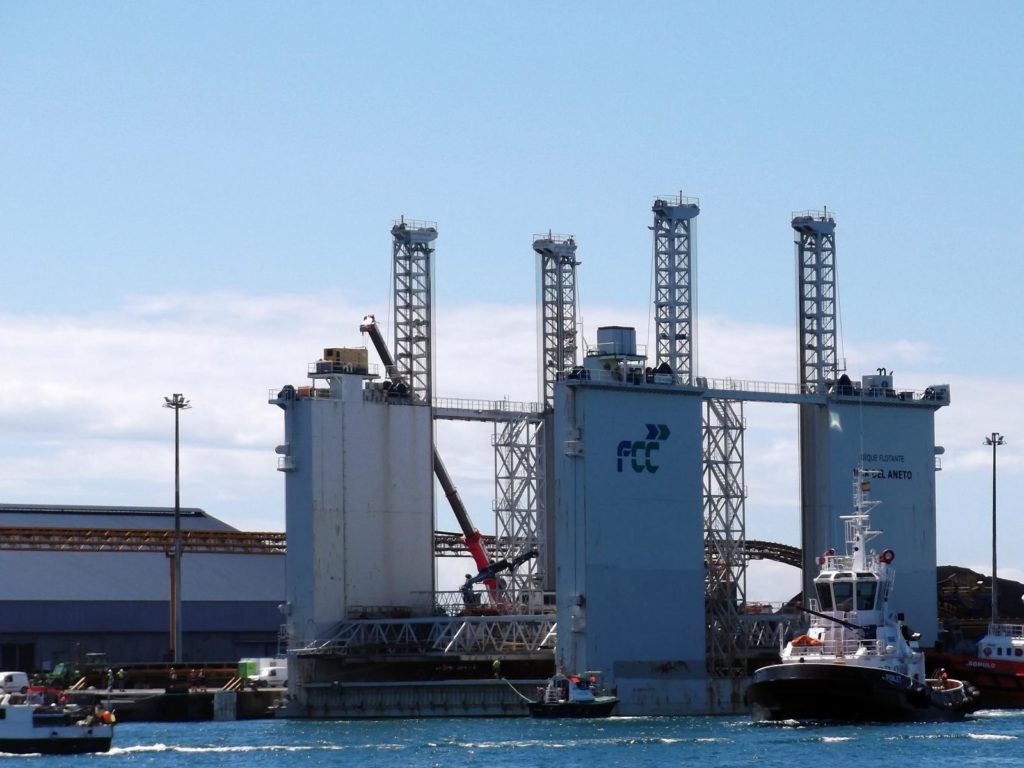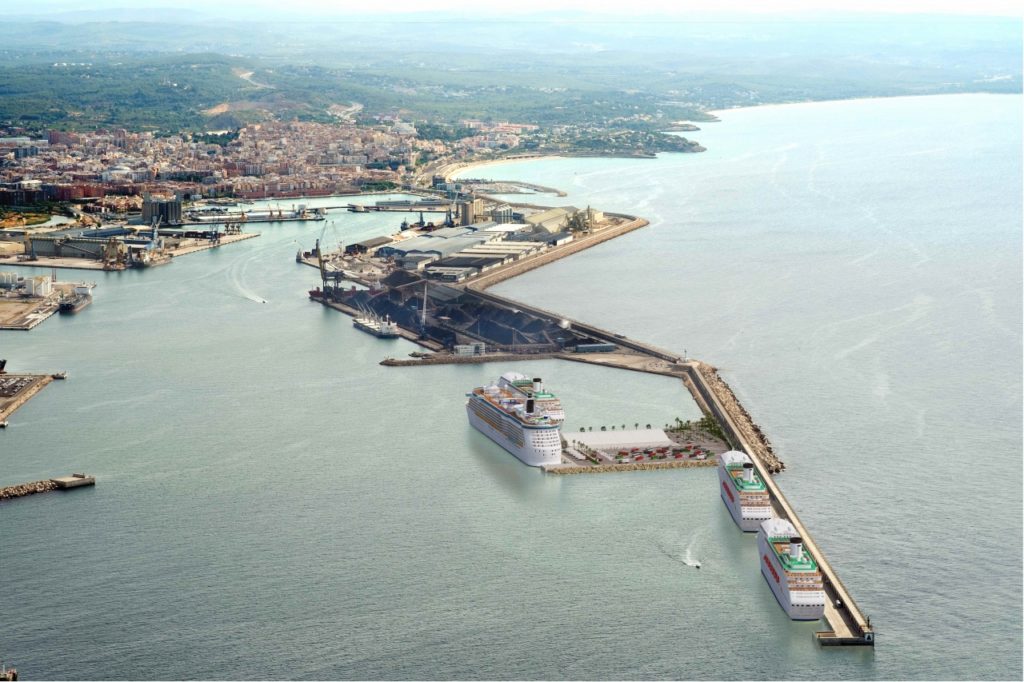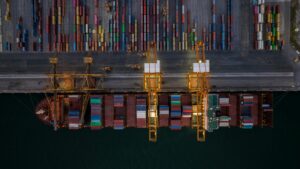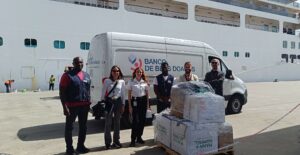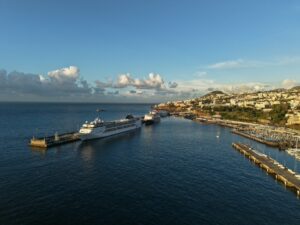The first phase of this new infrastructure will adjoin the Llevant breakwater and will be 460 metres long with a 4-hectare esplanade
Work on the new Balears Wharf is entering a decisive phase and over the next fourteen months it will transform the face of the Port of Tarragona. This new infrastructure will substantially change the area on the Llevant breakwater used for docking cruise ships, as it will be 460 metres long and have an area of 4 hectares.
The total length of the mooring line will be 700 metres as it will be possible to dock on both sides of 240 of those 460 metres. This means that twice the number of vessels will be able to tie up at the same time and also that the world’s largest cruise ships will now be able to call at Tarragona.
The construction of the wharf –at a cost of more than 27 million euros (+ IVA)– began officially last 17 April with the signing of the restatement ceremony. It will take 14 months and has a completion date of mid-2021.
In the future, the new infrastructure could also be opened up to solid bulk and multipurpose terminal services.
A new wharf in 10 phases and 14 months
Construction of the Balears Wharf began last April and take 14 months, after which the new installation will come into operation.
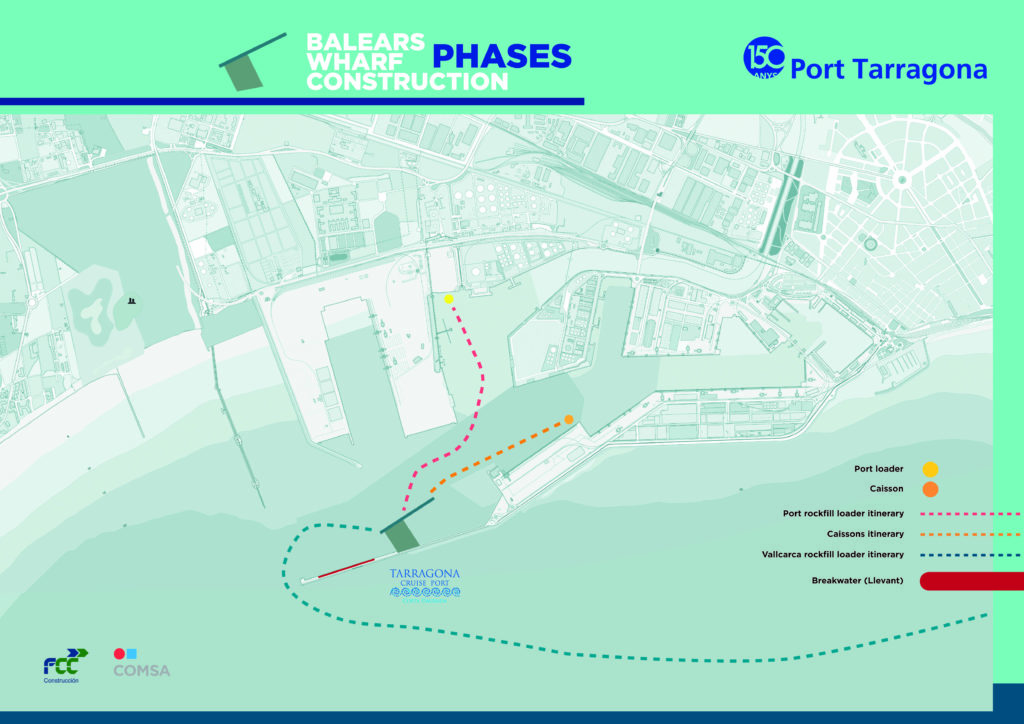
First Phase. Reception of the “Mar del Aneto” floating dock, also known as the frame, installed on the Andalusia Wharf. Its function is the construction of the caissons or concrete foundations to be used to build the new Balears Wharf.
This type of platform is used in ports to build wharfs, breakwaters and other port infrastructures. The caisson technology notably reduces the environmental impact compared to other more traditional methods; it also considerably shortens the execution time and is well-suited to the characteristics of the Port of Tarragona.
This first phase begins by setting up the anti-turbidity barrier on the water and removing the part of the breakwater where the new section will be built. The “Mar del Aneto” floating dock will be moved to the Catalunya Wharf and finally the sea bed will be dredged and levelled out.
Second Phase. The dredging is completed and work begins on laying the material for the breakwater from the barge.
BREAKWATERS
1,232,000 tons of material are expected to be laid for the breakwaters
Third Phase. Completion of the laying of the breakwater material by sea, followed immediately by levelling for the caisson placement. Caisson manufacture begins on the Catalunya Wharf and work begins on building the first section of the southern breakwater using sea and land resources.
DIMENSIONS OF THE 11 CAISSONS
Length: 41.05 m; width: 16.75; height 21.30 m.
Weight of an empty caisson: 7,288.80 tons | Weight of a full caisson: 33,440.65 tons
Fourth Phase. Anchoring and placement of the first caissons and completion of the work using land resources on the northern breakwater.
Fifth Phase. Completion of the placement of the caissons.
REINFORCEMENT STEEL
3.2 million kg of steel will be used for a cantilever beam and for caissons Caissons 3,042,131.51 kg | Cantilever beam 131,766.54 kg
Sixth Phase. Completion of the southern breakwater. The interior cells of the caissons are filled with stone from the land and the breakwater caissons are joined using terrestrial resources.
Seventh Phase. Completion of the northern breakwater. In parallel, the construction of the cantilever beam begins and the wharf is filled with rubble using a suction dredger with a cutter.
DREDGING
The project calls for the extraction of more than 729,000 m3 of material from the sea bed of which almost 500,000 m3 will be used as fill for the wharf
Ninth Phase. At this point the wharf is practically completed. The cantilever beam is completed with defences and bollards. The wharf is fully surfaced and the esplanade is partially surfaced.
BOLLARDS
Thirty-three 200-ton nominal TIR bollards are placed Sufficient for mooring the largest cruise ships in the world
Tenth Phase. After 14 months the wharf is operative.
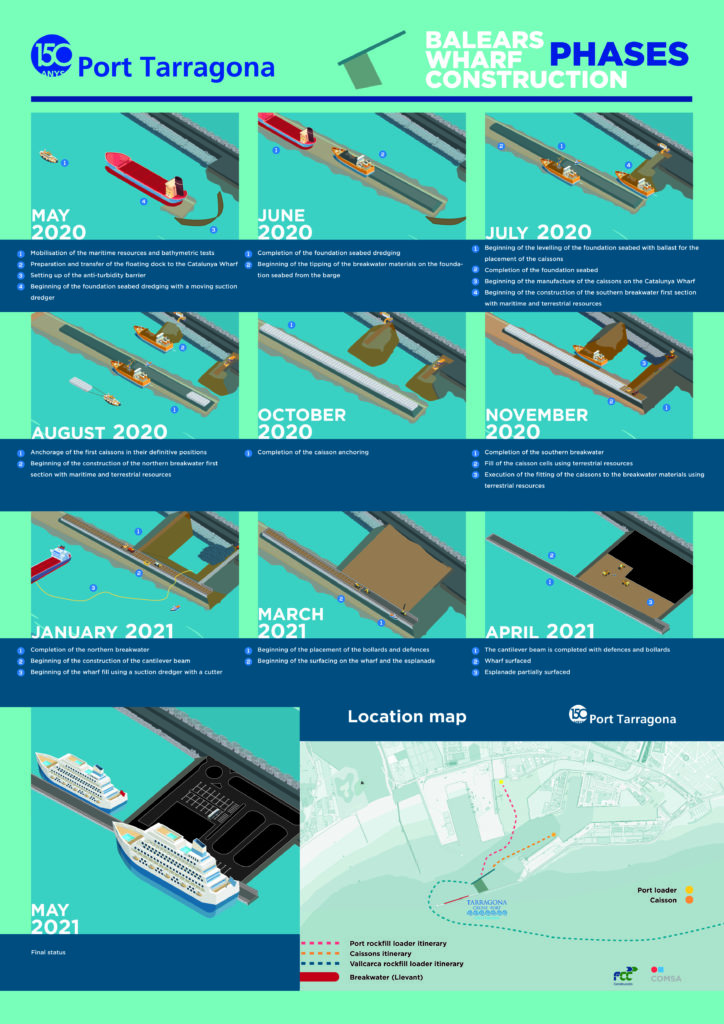
Environmental Protection Plan
The Port of Tarragona has incorporated voluntary environmental measures into the Balears Wharf project to reduce and guarantee minimal impact of the building work on the environment. It has designed an Environmental Protection Plan to control the actions during the execution of the construction work. It also has an environmental monitoring procedure that it applies systematically to all the building projects carried out by the Port of Tarragona.
